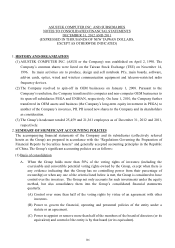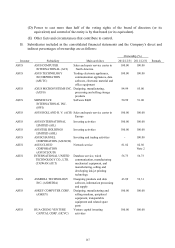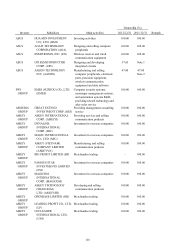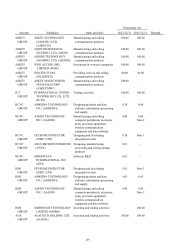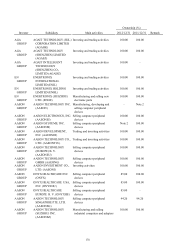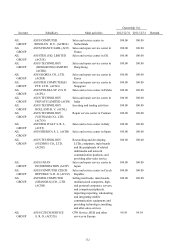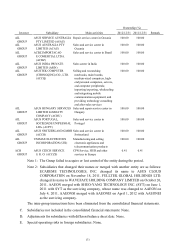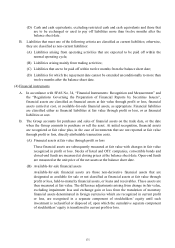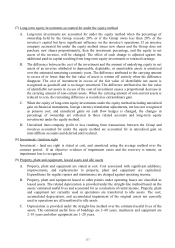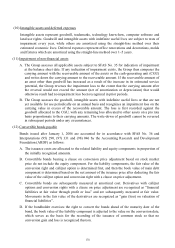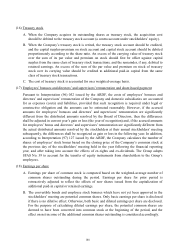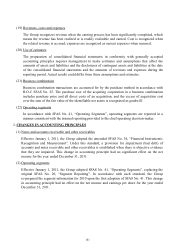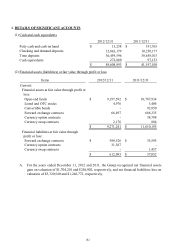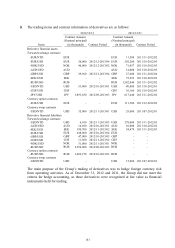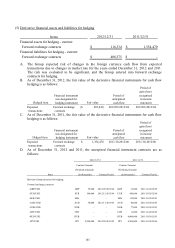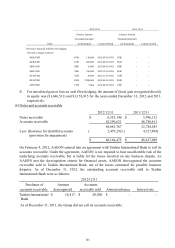Asus 2012 Annual Report Download - page 180
Download and view the complete annual report
Please find page 180 of the 2012 Asus annual report below. You can navigate through the pages in the report by either clicking on the pages listed below, or by using the keyword search tool below to find specific information within the annual report.
176
(C) Financial assets carried at cost
Equity investments without reliable market prices, including emerging and other unlisted
and non-OTC stocks or private funds, are measured at cost. If objective evidence of
impairment exists, the Group recognizes impairment loss, which is not reversed in
subsequent periods.
(D) Derivative financial assets and liabilities for hedging
The Group recognizes the offsetting effects on profit or loss of changes in the fair values
of the hedging instrument and the hedged item when hedging relationships meet the
criteria for hedge accounting which is accounted for as follows:
a. Fair value hedge: Changes in the fair value of a hedging instrument designated as a
fair value hedge are recognized in current profit or loss. The hedged item also is stated
at fair value in respect of the risk being hedged, with any gain or loss being
recognized in current profit or loss.
b. Cash flow hedge: Changes in the fair value of a hedging instrument designated as a
cash flow hedge are recognized directly in equity. The associated gains or losses that
were recognized directly in equity are transferred to profit or loss in the current period
when the hedged item affects profit or loss.
C. Subsequent to initial recognition, the Group measures all financial liabilities at amortized cost
except for financial liabilities at fair value through profit or loss, which are measured at fair
value.
(5) Notes and accounts receivable and other receivables
A. Notes and accounts receivable are claims resulting from the sale of goods or services. Other
receivables are those arising from transactions other than the sale of goods or services.
B. Notes and accounts receivable and other receivables are recognized initially at fair value and
subsequently measured at amortized cost using the effective interest method, less provision for
accumulated impairment. A provision for impairment is established when there is objective
evidence that the receivables are impaired. The amount of the provision is the difference
between the asset’s carrying amount and the present value of estimated future cash flows,
discounted at the original effective interest rate. When the fair value of the asset subsequently
increases and the increase can be objectively related to an event occurring after the impairment
loss was recognized in profit or loss, the impairment loss shall be reversed to the extent of the
loss previously recognized in profit or loss. Such recovery of impairment loss shall not make
the asset’s carrying amount more than its amortized cost where no accumulated impairment
loss was recognized. Subsequent recoveries of amounts previously written off are recognized
in profit.
(6) Inventories
The costs of inventories consist of those necessary expenditures incurred in bringing each item of
inventory to its usable condition and location. Cost is calculated on a weighted-average basis.
Inventories are valued at the lower of cost or net realizable value. Net realizable value by item is
determined based on the estimated selling price in the ordinary course of business, less estimated
costs of completion and costs to sell.


